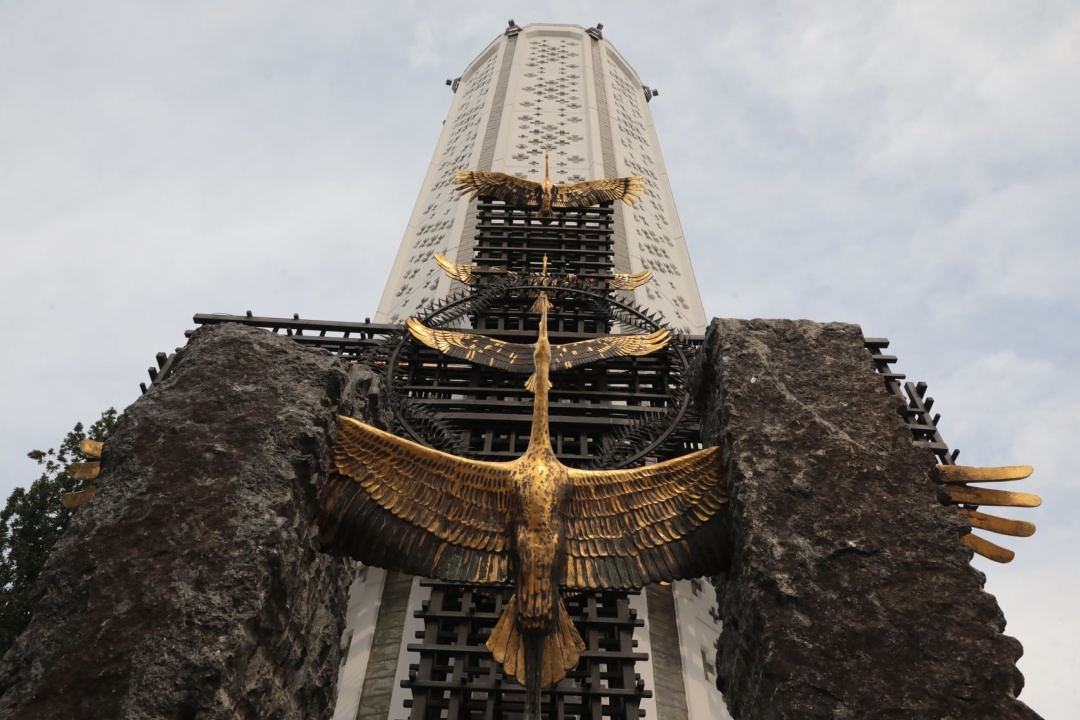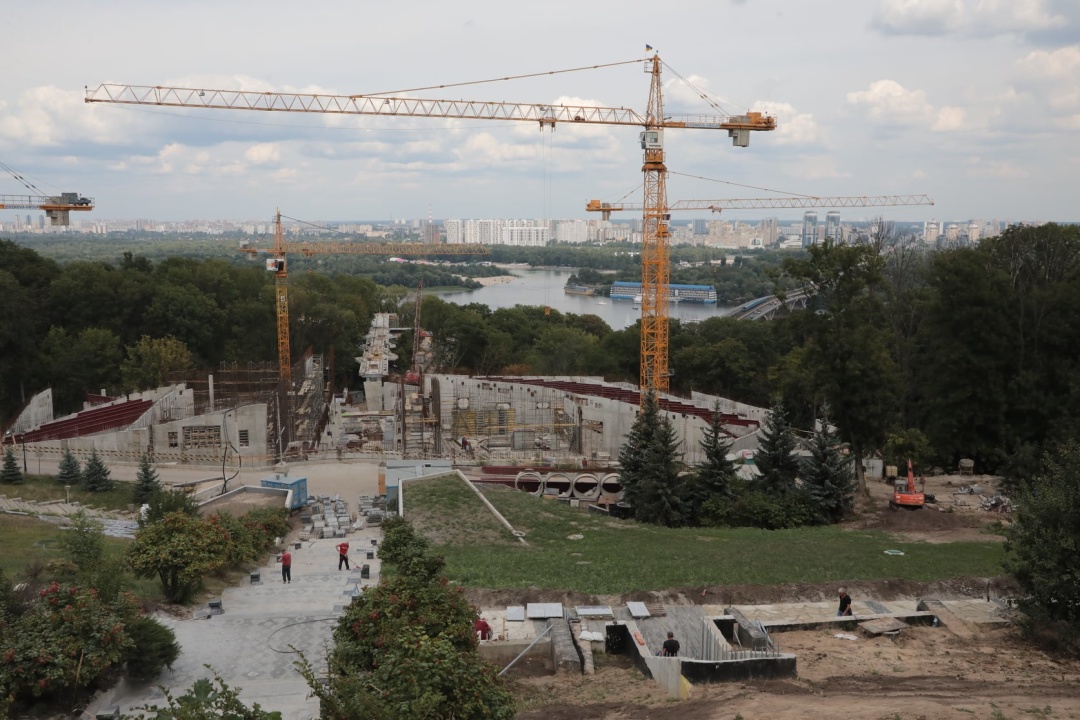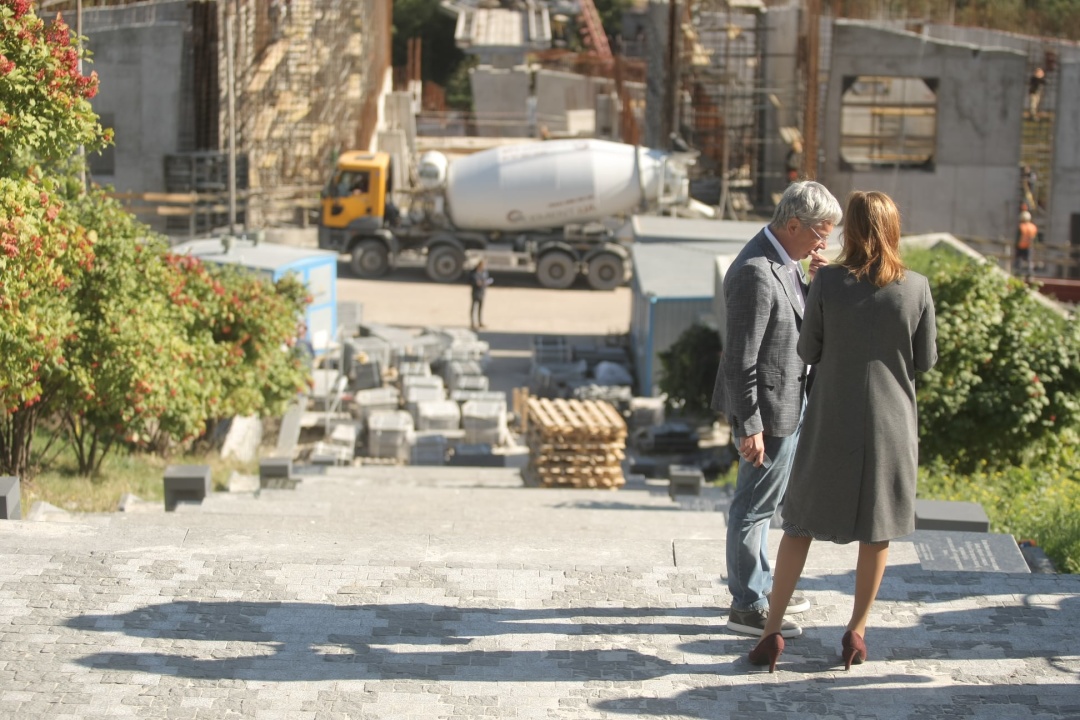The National Museum of the Holodomor-Genocide in Kyiv is a sacred site for every Ukrainian, one big heart in which four million hearts of people who died from the artificial famine perpetrated by the Communists in 1932-1933 are pounding. This year, in early September, a renovated Hall of Memory was opened in the museum. The concept of an exposition of the second stage of the museum complex is to be presented in late November.
Ukrinform asked Minister of Culture and Information Policy Oleksandr Tkachenko about when the construction of the second stage of the memorial is to be completed, about the peculiarities of the exposition that will be located in the new museum space, about the search for new exhibits, documents and memories of witnesses who would tell the whole truth about the tragedy of the Ukrainian people.
Question: Why is it so important to open the second stage of the museum? The museum is already operating, there's a big exposition, so why not use just the thesis "enough monuments to tragedies, let's remember the victories"?
Answer: Today, the Holodomor Museum has only one hall - the Hall of Memory. The construction of the second stage of the Holodomor Museum is ongoing. That's where the main exhibition space of the Holodomor Museum should be located. The phrase "Remember to Be" best explains why it is important to preserve the memory of the crime of genocide committed by the communist totalitarian regime against Ukrainians. Only knowing the truth, we will be able to revive our own statehood, draw the conclusions and build the state policy properly. It is the preservation of collective memory that will help build a social, legal, and democratic state and civil society. And I am grateful to President Volodymyr Zelensky as such a policy is being actively implemented with his support. This policy also concerns the initiative to complete the construction of the National Museum of the Holodomor-Genocide in Ukraine as soon as possible.

Question: When will the construction of the second stage of the museum be completed? Is construction work going according to schedule? Are there any difficulties?
Answer: Everything is going according to schedule. The construction of the second stage of the museum will be completed in 2022. Difficulties certainly arise, because this is a difficult project in terms of design. But now everything is going according to plan.
Question: Inspecting the construction of the second stage of the museum, you said that an updated interactive exhibition has already opened. How was it updated? How "stronger" is this exhibition now?
Answer: Museums are designed for visitors, so they must meet the requirements of the time. The updated exposition of the Holodomor Museum has been created in such a way that it will be interesting to both 5-year-olds and 95-year-olds. Here you can see 3D mapping on the walls, interactive maps, as well as the things of people who survived the Holodomor. Each of these things has its own unique history. The Holodomor Museum is the history of Ukraine from the 1930s to the present day.
Question: To what degree does the project fit into the environment? What would you say to social media "experts" who are indignant that "they spoiled a park with another Holodomor museum"?
Answer: The project of the second stage of the Holodomor Museum is designed in such a way that the museum building fits into the space of the environment. Those writers only need to wait for the work to be completed.

Question: The Holodomor Museum has launched an expedition to four eastern and southern regions. What is the purpose of this expedition?
Answer: The expedition to the Mykolaiv, Kherson, Luhansk and Donetsk regions is being implemented as part of the cultural and art project "Holodomor: A Mosaic of History. Unknown Pages," with the support of the Ukrainian Cultural Foundation. This is the second large-scale expedition across Ukraine this year. The first one took place last year. The expedition, which will cover a total of ten regions of Ukraine, is of great importance for preserving the memory of the genocide of Ukrainians. The purpose of the expedition has several areas of work of museum employees. First, it is a search for witnesses of the Holodomor of 1932-1933, video and audio recordings of their testimonies, a photo recording of family archives and documents of the 1930s and 1940s. Secondly, it is a search for new information about the mass burial sites of Holodomor victims, interviews with local historians and those who study this topic. Thirdly, it is a search for unique things to replenish the exposition of the second stage of the museum.
The results of the expedition can be found on the museum's website in the "Testimony" section, which will be publicly available.

Question: Are there any new scientific findings? Is the museum developing some new scientific directions?
Answer: The museum staff constantly discovers new documents proving the criminal policy of the communist totalitarian regime. They cover various aspects of the Holodomor genocide. For example, the museum's renovated Hall of Memory will exhibit for the first time the letters of Jerry Berman, a foreign engineer who witnessed the extermination of the Ukrainian nation in the Donbas in 1932-1933.
Question: There are critics stating that the museum ceases to be interesting from year to year. How can the interest in the museum be revived?
Answer: Again, I must emphasize that you always need to keep up with the times. Evidence of this was the updated multimedia and interactive exposition of the Holodomor Museum. In addition, the museum team develops new educational programs, interactive tours, classes, training sessions for children of all ages. The museum organizes educational hubs and participates in educational festivals and events.
